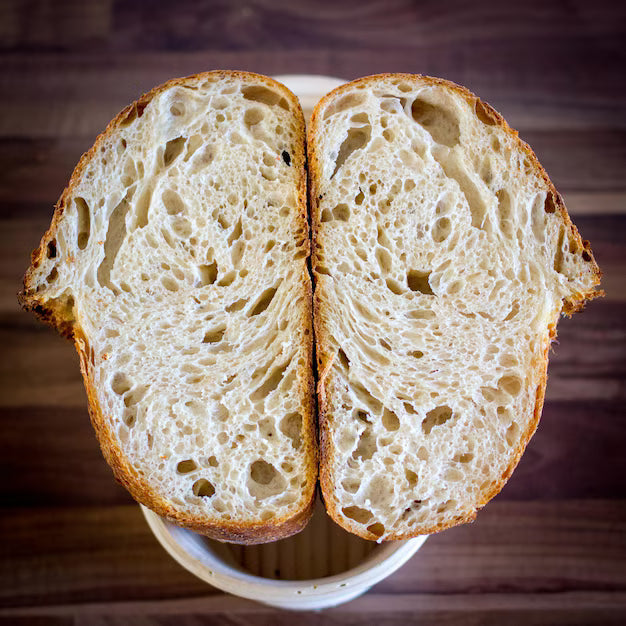
Why European Foods Taste Different in the US (and Why That Matters)
If you’ve ever traveled to Europe, you’ve probably noticed something curious: food just tastes better there. Bread is crustier, cheese is creamier, tomatoes are sweeter, and even a simple cup of coffee seems richer and smoother. For many European expats living in the US, this is one of the first things they miss when they move abroad.
But why does European food taste so different from its American counterpart? The answer lies in a mix of farming practices, production standards, ingredient regulations, and culinary traditions - all of which play a key role in shaping flavor and quality. Let’s break it down.
1. Different Farming Practices
European agriculture places a strong emphasis on quality over quantity. Small family farms, seasonal harvesting, and strict rules on pesticides and fertilizers result in crops that are grown for flavor rather than mass production.
Key Differences:
-
Seasonal produce: Many European countries prioritize eating fruits and vegetables in season, which means they’re harvested at peak ripeness for maximum flavor.
-
Animal welfare standards: European livestock farms typically have stricter rules about antibiotics and hormones, resulting in meat and dairy with cleaner, more natural taste.
-
Smaller-scale farming: Regional diversity leads to products with unique terroir (the “taste of place”) - think French cheeses, Italian olive oils, Spanish hams.
What This Means for You:
When you buy authentic European products, you’re tasting food that was cultivated with care, often using traditional methods that preserve natural flavor and nutrients.
2. Strict Ingredient Regulations
European Union (EU) food laws are famously rigorous, with hundreds of banned additives and colorings that are still allowed in the US. This impacts everything from candy to soda to packaged snacks.
Examples:
-
Fewer artificial colors: Popular dyes like Yellow 5 and Red 40 are restricted or banned in Europe.
-
Cleaner ingredient lists: European labels often have fewer preservatives and stabilizers.
-
Protected designations: PDO and PGI certifications (Protected Designation of Origin, Protected Geographical Indication) guarantee authenticity for products like Parmigiano Reggiano, Prosciutto di Parma, and Roquefort cheese.
What This Means for You:
When you bite into a European chocolate bar or sip a European soda, you’re getting closer to the original recipe - with fewer artificial ingredients and a purer, more authentic flavor.
3. Traditional Production Methods
Many European foods are made using recipes and techniques that have been passed down for generations. Unlike mass-produced alternatives, these artisanal methods allow natural flavors to develop slowly.
Examples:
-
Long-fermented breads like French sourdough or Italian ciabatta have richer taste and better digestibility.
-
Aged cheeses like Gruyère, Manchego, and Comté develop complexity over time.
-
Cured meats like Spanish Jamón Ibérico and Italian salami rely on slow air-drying, not chemical shortcuts.
What This Means for You:
Authentic European products deliver complexity and depth of flavor that industrial shortcuts simply can’t replicate.
4. Taste Preferences & Culinary Culture
Europeans often favor balance and natural flavor over heavy sweetness or saltiness. Many processed American foods are optimized for bold, addictive taste profiles, which can overpower subtle ingredients.
Key Differences:
-
Less sugar: European sodas, cookies, and cereals often contain less sugar than US equivalents.
-
Smaller portion sizes: Meals are designed to be satisfying but not excessive.
-
Focus on freshness: Frequent grocery shopping means fresher ingredients at the table.
What This Means for You:
Switching to European brands can help you enjoy food that is naturally flavorful and often healthier - without overwhelming your palate.
5. Authenticity & Traceability
When you purchase European imports, you’re also buying into a tradition of traceability and authenticity. Many products are tied to specific regions, farms, or families.
Examples:
-
Colavita Olive Oil sourced from carefully selected groves.
-
Bonne Maman Jams made from natural fruit and cane sugar.
-
Tutto Calabria chili peppers grown in Calabria, Italy.
This commitment to transparency gives you confidence that what’s on the label is what’s in the jar or bottle.
Conclusion
European foods taste different for a reason - and those differences matter. They represent a commitment to tradition, quality, and authenticity that can transform your everyday cooking into something extraordinary.
For expats, they bring back the flavors of home. For American foodies, they offer a chance to experience food as it was meant to be - pure, simple, and bursting with flavor.
👉 Explore authentic European products at Pick and Get and bring true European taste to your table today.








